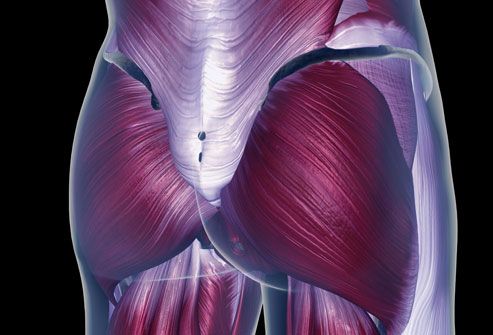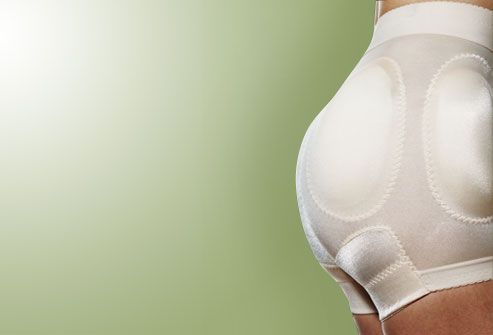1. A Caring Guy Is a Hot Guy
What do women want? For those who've ever pondered this question, here are 19 relationship secrets. They're based on the study of healthy, happy couples and our changing gender roles. Secret No. 1: Women appreciate a guy with a sensitive side, especially when they're upset. Put your arm around her and hand her a tissue. Nurturing is a powerful way to connect.2. Chivalry Still Has a Place
When it comes to romance, many women do like men to take a traditional masculine role. This is especially true in the wooing stage of a relationship, according to psychologist Diana Kirschner, PhD, who's written several books about love. She's perfectly capable of pulling out her own chair or opening a door, but if you see her hesitate, she might just be waiting for you to be the gentleman.3. Dress to Impress
Styles come and go, but a man's attention to his grooming and clothing should be long lasting. It's important to women from the first flirtation through the honeymoon and beyond. "You've got to figure out if there's a certain look that she likes," says Kirschner. "If she likes a guy in tight jeans, you wear tight jeans."4. Guy Wears Red, Guy Gets Girl
OK, this tip doesn't come from women, but from clever testing by psychologists of women's subconscious preferences. One intriguing study found that the color red made men seem more powerful, attractive, and sexually desirable to women. There's a caveat, though. Red doesn't make guys appear nicer or kinder. That part is up to you.5. Don't Hide Your Flaws
Nothing captures a woman's heart quite like a good man who wants to be a better man, according to love guru Kirschner. "Women love personal growth, they love a man who is thoughtful and sensitive." She likes it when her man recognizes a flaw -- a short temper, for example, or a regularly sullen mood after work -- and loves it when he makes an effort to address it.
6. Don't Try to Fix Her World
When something's bothering her, she wants your ear, not your advice. "Men feel the need to fix things because they are solution-oriented," says Kirschner. "But to a woman, really listening is a wonderful, wonderful thing that deepens the relationship."7. Nodding Is Not Enough
Listening is important, but she also wants to know that she is being heard. Nodding along won't cut it. When she pauses, she's giving you a cue to respond in a compassionate, caring way, says Kirschner. If she tells you that she is upset because her boss gave her a tough time, she wants to hear you say, "I'm sorry that work was such a drag for you today." And remember: Resist the urge to offer solutions.8. Date No. 3 Is Not a Bedroom Key
The three dates before sex rule is an urban legend. Women don't set a timeline on when they'll invite a potential partner into the bedroom. Some women will want to have many dates before sex. A good rule of thumb is to give the relationship at least two months to grow before entering the sexual arena.9. Women Like the Slow Lane
Guys often want to take the quickest path to sex. But many women prefer the scenic route. "Women want sex but they get to it in a different way," says psychologist Kirschner, who has helped hundreds of couples achieve a more rewarding relationship. "They want to feel connected and understood, they want to be romanced." That means time and talking and touching -- in other words, foreplay.10. Safe Sex Is a Turn-On
This is something both of you need to focus on, but Kirschner says that women appreciate it and feel more protected when the guy makes it clear that it's a concern to him -- and then shows her that he practices what he preaches.11. Learn What She Wants in Bed
Women do like to talk to about what's going on in the sack, and they want to please their man -- and a tactful approach is often best. Ask her what she likes. Be sure to ask for what you want in a positive and validating way. Kirschner advises saying something along the lines of, "I would really love if you [fill in the blanks]."12. Performance Anxiety Is Shared
When you have an off night and can't perform, she feels bad, too. She might worry that she no longer turns you on and she will want assurance that that is not true. She will want to talk about what's going on and what you are doing about it, especially if it's a recurring problem. "It's a touchy thing for both of you," says Kirschner, "but talking about it is a plus."13. Mirroring Is a Barometer of Love
Remember the saying "imitation is the highest form of flattery"? A woman often conveys how she feels about you by mirroring your moods and moves. She may order a meal that pairs with yours, wear your favorite color, or smile or cross her arms when you do. Mimicking is her way of putting you at ease and letting you know she is charmed.
14. Your Shirt May Be a Love Magnet
Does your partner curl up in your sweater or sneak into your work shirt? Some researchers have found that the scent of a man's perspiration has a relaxing effect on women.15. Say It, Again and Again
Women like to be told they look nice, and they like a man who notices without being told. When she's wearing a sexy new dress, for example, she'll give you major points for saying how hot she looks, especially if you mention the dress before she does. If she's looking particularly attractive, if she has a new haircut, if she's looking more fit -- let her hear about it.16. Don't Fear the Relationship Talk
When your woman wants to talk about the relationship, it doesn't mean you did something wrong (well, not necessarily). Kirschner says that many women like to talk about the "state of the union" -- what's going right, what's going wrong, or simply what's going on. This is a good thing. An honest, wide-ranging talk can bring the two of you closer.17. Look Your Partner in the Eye
You may feel more comfortable sitting side by side, but many women prefer face time -- and we don't mean the latest mobile video chat technology. Kirschner says that women prefer their men to make eye contact with them as they're talking. And looking her in the eye during sex will deepen the relationship outside the bedroom.18. Don't Miss the Moment
How do you know if she is ready to commit? She'll say so. This is something that women are often quite up front about. But they don't want to have "the talk" too often. If she's ready and she's given you time, the next time the subject comes up, be prepared to step up or step off.19. Romance Is Simple; Keep It Coming
Romance is something she will always want, whether you've been together two months or 20 years. Flowers, an intimate dinner, a few lines of love poetry -- don't worry, they don't have to be your own -- might sound cliché, but Kirschner insists that most women appreciate such simple romantic gestures and often show their appreciation after the lights go down.Source: WebMD







































